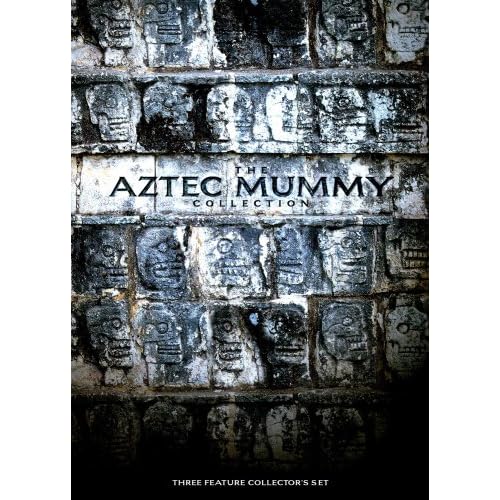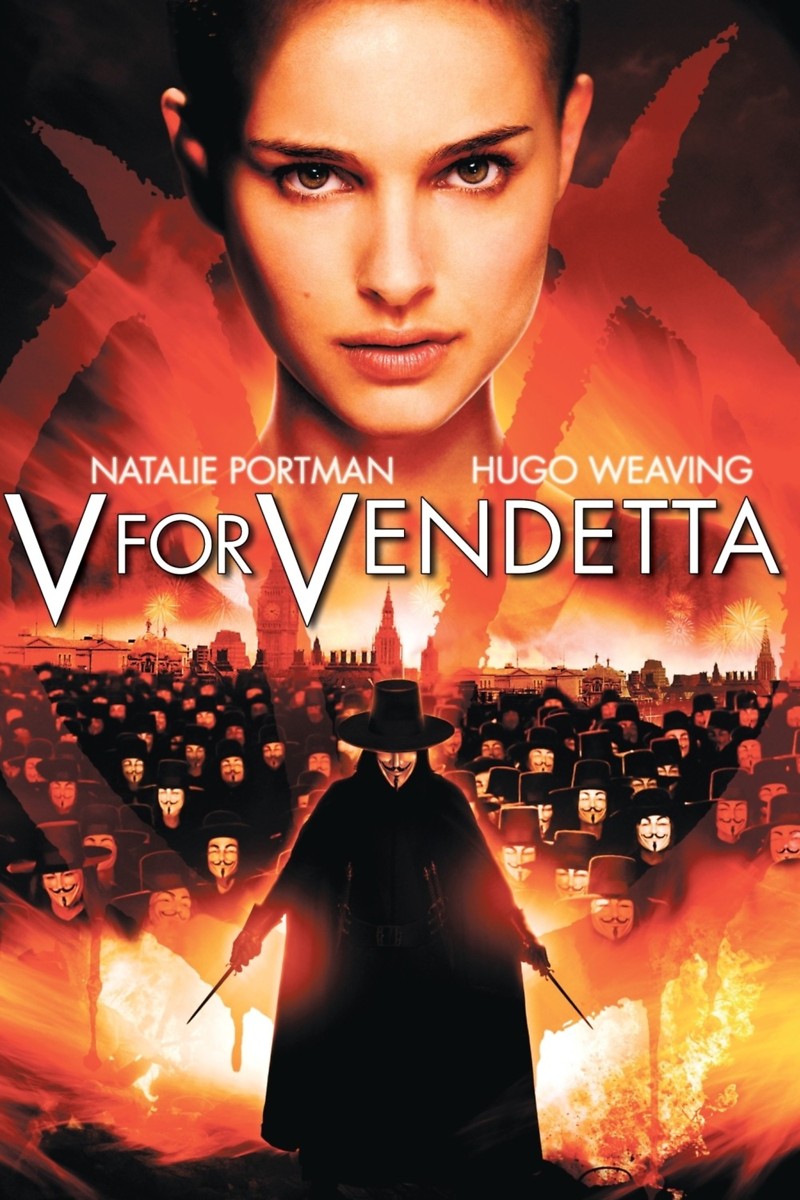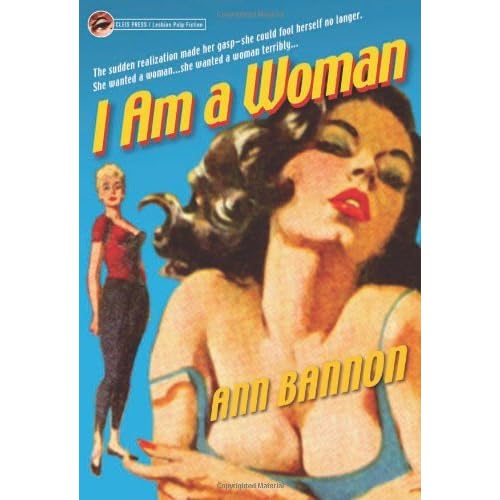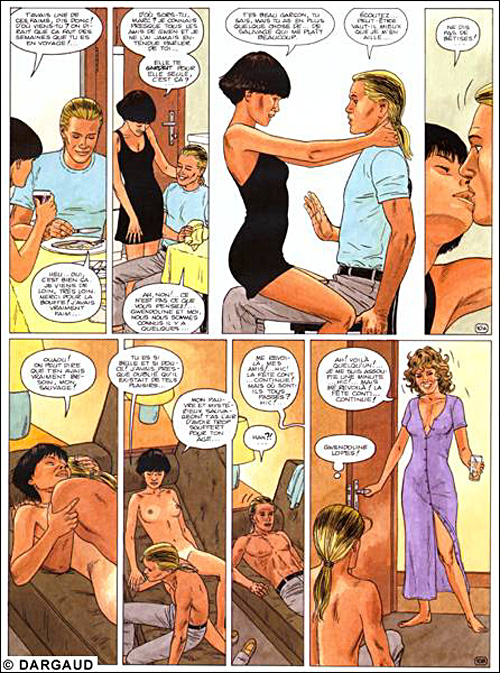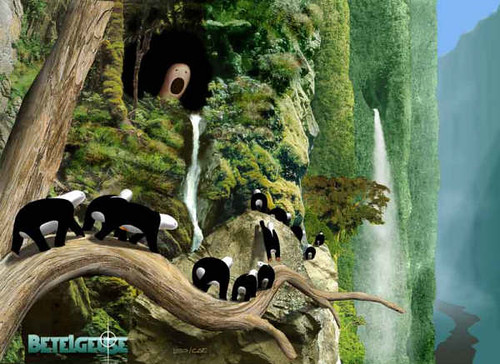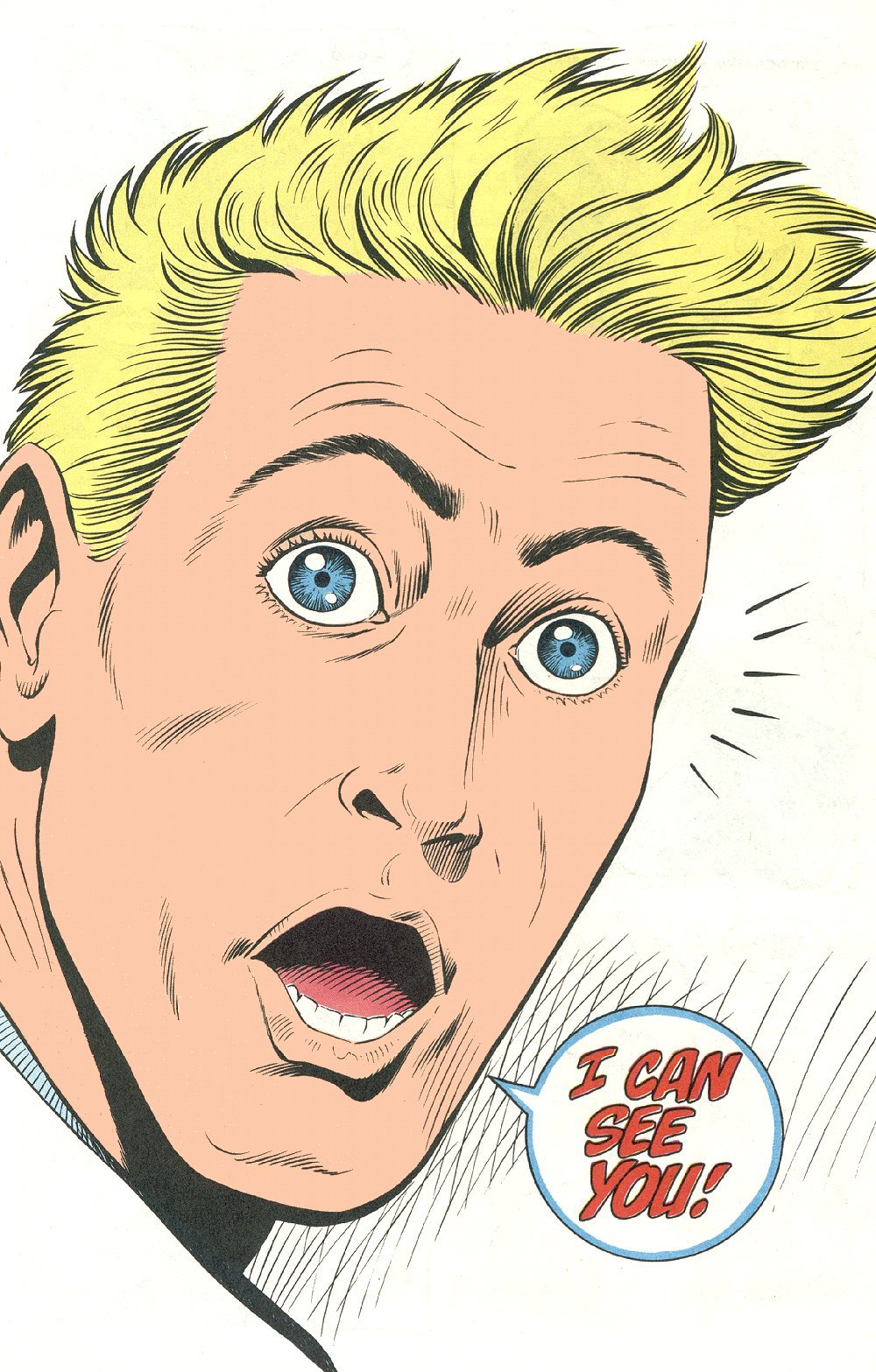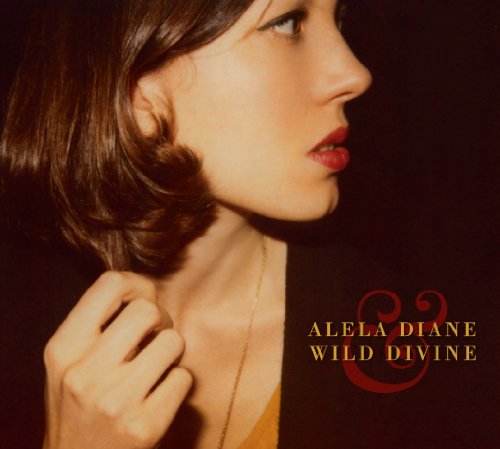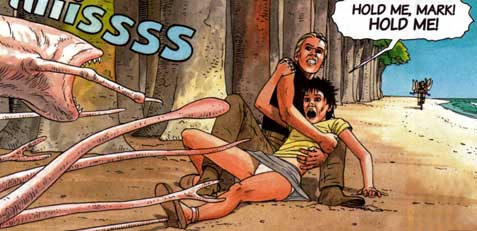4.0 out of 5 stars Four stars only because I'm feeling generous, 24 July 2011
This review is from: Secret Six: The Reptile Brain (Paperback)
This is usually one of my favourite titles but this time it takes a little dip in quality which isn't really writer Gail Simone's fault. There are two separate stories in here and the first and longest is the best.
Bane's Secret Six is hired by a branch of the US government run by Spycatcher to go to Skartaris (the world at the Earth's core) and conquer it in the name of the USA. Scandal's Secret Six is hired by Amanda Waller to stop them. New to the team(s) are Dwarfstar a psychotic rapist and murderer with Atom-type powers, the jovial King Shark who just loves to eat people, Giganta who doesn't know that Dwarfstar killed her boyfriend Ryan Choi (aka Atom v.3), the assassin Lady Vic who Deadshot has a grudge against, and Tremor who works for Waller. Throw in primitive violent people, dinosaurs plus assorted monsters and fans of bloody carnage won't be disappointed.
Unfortunately the two-parter at the end is a no previous knowledge necessary (well, almost) tie-in by Paul Cornell with his (and I like Cornell's writing as a rule) over-rated Luthor series.
I nearly gave this volume 3 stars. Somewhat disappointing.
Bane's Secret Six is hired by a branch of the US government run by Spycatcher to go to Skartaris (the world at the Earth's core) and conquer it in the name of the USA. Scandal's Secret Six is hired by Amanda Waller to stop them. New to the team(s) are Dwarfstar a psychotic rapist and murderer with Atom-type powers, the jovial King Shark who just loves to eat people, Giganta who doesn't know that Dwarfstar killed her boyfriend Ryan Choi (aka Atom v.3), the assassin Lady Vic who Deadshot has a grudge against, and Tremor who works for Waller. Throw in primitive violent people, dinosaurs plus assorted monsters and fans of bloody carnage won't be disappointed.
Unfortunately the two-parter at the end is a no previous knowledge necessary (well, almost) tie-in by Paul Cornell with his (and I like Cornell's writing as a rule) over-rated Luthor series.
I nearly gave this volume 3 stars. Somewhat disappointing.
4.0 out of 5 stars Consistently good series, 24 July 2011
This review is from: Batgirl: The Flood (Paperback)
Batgirl,aka Stephanie Brown formerly the Spoiler, is currently one of the most likeable super-heroines around thanks to Bryan Q. Miller's deft scripting. In this second collection we arrive at the mid-point in Stephanie's tenure. Things are shortly to change when the DC Universe has its reboot in September and Barbara Gordon is once again Batgirl.
Talking of Barbara Gordon, as Oracle she has a four-part team-up with Stephanie as they face the menace of the Calculator who's in the process of turning most of Gotham (including several heroes) into techno-zombies under his control and he really doesn't like either Batgirl or Oracle. Rounding off the package is Batgirl vs Clayface with the help of the attractive new cop she rather likes and concludes with Stephanie having a girl's night out with friend Kara (aka Supergirl) which needless to say doesn't go plan.
This is a lightweight fun package with good character work and it's a shame that it's going to end fairly soon,though I'm sure Stephanie will be back as, my guess and I could be wrong, the Spoiler again. Meanwhile, enjoy this, one of DC's consistently better titles.
Talking of Barbara Gordon, as Oracle she has a four-part team-up with Stephanie as they face the menace of the Calculator who's in the process of turning most of Gotham (including several heroes) into techno-zombies under his control and he really doesn't like either Batgirl or Oracle. Rounding off the package is Batgirl vs Clayface with the help of the attractive new cop she rather likes and concludes with Stephanie having a girl's night out with friend Kara (aka Supergirl) which needless to say doesn't go plan.
This is a lightweight fun package with good character work and it's a shame that it's going to end fairly soon,though I'm sure Stephanie will be back as, my guess and I could be wrong, the Spoiler again. Meanwhile, enjoy this, one of DC's consistently better titles.
4.0 out of 5 stars Gail's back!, 24 July 2011
This review is from: Birds of Prey: Endrun (Hardcover)
Gail Simone returns to the series which really made her name as one of DC's top writers. It's got the Brightest Day banner on the top but if you haven't been following that, don't worry as all it means is that Dove and the recently deceased Hawk (a man! on the team!) have been added to the roster. Otherwise it's all action as something from Black Canary's past turns up to bite her in the form of White Canary whose martial arts skills just might match that of Shiva and not even Hawk, Dove, Huntress, and Lady Blackhawk can help her. Oracle can't help either as she's being betrayed by two people she trusted.
So, yes, it's business as usual and fans of Simone's run on this title won't be disappointed. Fans of Oracle should also be checking out the current Batgirl series.
So, yes, it's business as usual and fans of Simone's run on this title won't be disappointed. Fans of Oracle should also be checking out the current Batgirl series.
5.0 out of 5 stars Here's something new: a charming super-hero book, 23 July 2011
This review is from: Batman: Knight and Squire (Paperback)
'Charming' isn't an adjective usually applied to super-heroes. 'Good-natured' is another one. Yet both are applicable to this slightly rose-tinted look at British super-heroes who exemplify the better aspects of the British character -moderation, tolerance, self-mockery. Now despite being Britain's answer to Batman and Robin, Knight and Squire are very much their own people and their partnership one of equals. The Squire, or Beryl as she's usually known, is a likable intelligent teenage girl with a subtle super-power. There's a lovely scene where we see her in her 'secret identity' for the first time. An Asian shopkeeper is berating a super-villain who's come to the small town where K&S are supposed to live with a view of have a throwdown with them. The shopkeeper insists that they don't live here and he should go to London. After the villain's gone he gives Beryl her order and says, with a wink, if they only they knew who K&S really were they could thank them. In fact, everybody where they live knows who they are.
My favourite character is probably the rather sad and ultimately tragic figure of Jarvis Poker the British Joker who admires the real Joker's style but just can't find it in himself to actually commit crimes. It's Jarvis Poker who is indirectly responsible for the abrupt change of tone of the series from knowing humour to one of tragedy.
My rating is probably a bit high as I'm not overly keen on artist Jimmy Broxton's style (one character is supposed to be modelled on Patrick Moore but you could have fooled me, though Jonathan Ross is recognisable). The writing by Paul Cornell, however, is terrific though I don't think this would support an ongoing title but a miniseries like this one every couple of years would be a treat to anticipate. Rather like an ice cream at the seaside on a warm British summer's day.
My favourite character is probably the rather sad and ultimately tragic figure of Jarvis Poker the British Joker who admires the real Joker's style but just can't find it in himself to actually commit crimes. It's Jarvis Poker who is indirectly responsible for the abrupt change of tone of the series from knowing humour to one of tragedy.
My rating is probably a bit high as I'm not overly keen on artist Jimmy Broxton's style (one character is supposed to be modelled on Patrick Moore but you could have fooled me, though Jonathan Ross is recognisable). The writing by Paul Cornell, however, is terrific though I don't think this would support an ongoing title but a miniseries like this one every couple of years would be a treat to anticipate. Rather like an ice cream at the seaside on a warm British summer's day.










